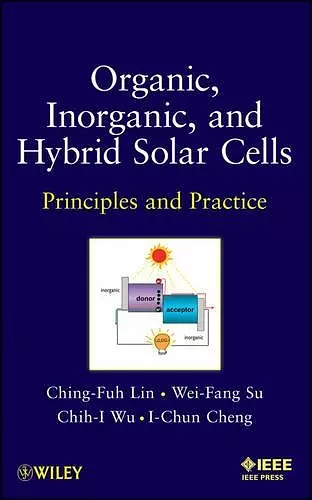Organic, Inorganic and Hybrid Solar Cells
Principles and Practice
Chih-I Wu author Wei-Fang Su author I-Chun Cheng author Ching-Fuh Lin author
Format:Hardback
Publisher:John Wiley & Sons Inc
Published:5th Oct '12
Currently unavailable, and unfortunately no date known when it will be back

Provides detailed descriptions of organic, inorganic, and hybrid solar cells and the latest developments in the quest to produce low-cost, long-lasting solar cells
What will it take to transform solar energy from an important alternative source to a truly competitive and, perhaps, dominant one? Lower cost and longer life. Organic, Inorganic, and Hybrid Solar Cells: Principles and Practice provides in-depth information on the three types of existing solar cells, giving readers a good foundation for evaluating the technologies with the most potential for competing with energy from fossil fuels.
Featuring a Foreword written by Nobel Peace Prize co-winner Dr. Woodrow W. Clark, this timely and comprehensive guide:
- Focuses on the realization of low-cost and long-life solar cells study and applications
- Reviews the properties of inorganic materials, primarily semiconductors
- Explores the electrical and optical properties of organic materials
- Discusses the interfacing of organic and inorganic materials: compatibility of deposition, the adhesion problem, formation of surface states, and band-level realignment
- Provides a detailed description of organic-inorganic hybrid solar cells, from the basic principles to practical devices
- Introduces a sandwiched structure for hybrid solar cells, which combines a far lower production cost than inorganic solar cells while stabilizing and extending the life of organic material far beyond that of organic solar cells
Organic, Inorganic, and Hybrid Solar Cells: Principles and Practice is a first-rate professional reference for electrical engineers and important supplemental reading for graduate students in related areas of study.
ISBN: 9781118168530
Dimensions: 243mm x 163mm x 19mm
Weight: 513g
280 pages